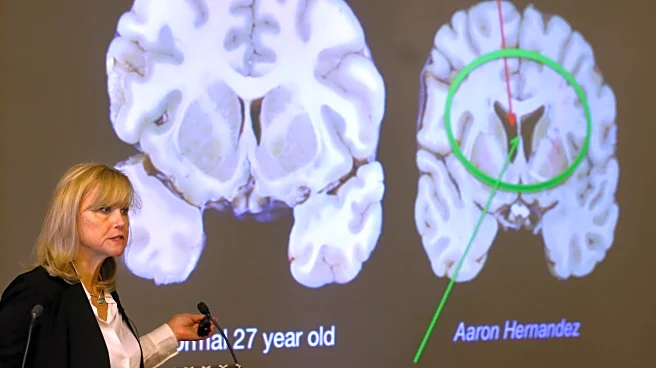What's Happening?
Shane Tamura, the gunman responsible for a mass shooting at the NFL headquarters in Midtown, was confirmed to have chronic traumatic encephalopathy (CTE), a brain disease associated with repeated head trauma. The medical examiner's office revealed that Tamura, a former high school football player, had low-stage CTE. Tamura left a suicide note blaming the NFL for his mental health struggles and requested his brain be studied for CTE. The shooting resulted in the deaths of four individuals, including a NYPD officer, before Tamura took his own life. The NFL has expressed grief over the incident, while the medical examiner noted that the role of CTE in the shooting remains unclear.
Why It's Important?
The confirmation of CTE in Shane Tamura highlights ongoing concerns about the impact of head injuries in contact sports, particularly football. CTE has been linked to behavioral issues and mental health struggles, raising questions about player safety and the responsibility of sports organizations like the NFL. The incident underscores the need for further research into CTE and its effects, as well as potential policy changes to protect athletes. The tragedy also brings attention to mental health issues and the importance of addressing them proactively to prevent such violent outcomes.
What's Next?
The NFL and other sports organizations may face increased pressure to address the risks associated with head injuries and CTE. This could lead to changes in safety protocols, player education, and support systems for athletes. Additionally, the medical community may continue to study CTE to better understand its impact and develop diagnostic methods that can be used before death. Public discourse around mental health and sports safety is likely to intensify, potentially influencing policy and public awareness.
Beyond the Headlines
The incident raises ethical questions about the responsibility of sports leagues in protecting their players and the transparency of information regarding health risks. It also highlights the cultural significance of football in the U.S. and the potential consequences of prioritizing entertainment over player welfare. Long-term, this could lead to shifts in how sports are played and perceived, with greater emphasis on safety and health.












